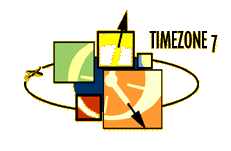
[click to zoom]
[click to zoom]

[click to zoom]

[click to zoom]

[click to zoom]

[click to zoom]

[click to zoom]

[click to zoom]

[click to zoom]

[click to zoom]
|
 |
The Backwaters Part I January 18- 19, 1999
While standing in line in Bombay waiting for our tickets
to Goa, we started talking to a Dutchman from Amsterdam who was also heading to Goa. When
we got the last three seats on the train for the 9th we somewhat mockingly told everyone
in line behind us "see you on the 10th - haha". We were therefore quite
surprised when the large lanky Dutchman sat down next to us on the train to Goa on the
9th. We chatted with Benti "the Dutchman" Banach until bedtime, and then parted
ways the following morning when he got off the train at the first Goan exit and we
foolishly continued into the middle of the state.
As we were walking through the Cochin Synagogue, a week
later, we were again surprised to see our train-mate Benti. We toured the synagogue,
walked through the Dutch palace together and found we were all heading south, to the town
of Allepey, to take a backwaters boat tour. However we made no future plans to meet up.
The next day, while waiting for the ferry to take us back to the Ernakulam bus station, we
bumped into the Dutchman yet again! Taking this as a sign, we decided to go to Allepey
together and try to charter a boat to take us through the Keralan backwaters.
In Allepey we went to the Keralan tourist office, and
they recommended a hotel that also booked boat tours. Of course, not before trying to sell
us a crummy 8-hour ferry trip. The hotel was full except for one room, which we gave to
Benti. We had to walk about one mile away to another (we assumed relatives) hotel. It
turned out to be much nicer and worth the walk. Later on, back at Benti's hotel The
Holiday Inn (no relation - trust us) we met Bijou who sold us a two night forty-eight hour
boat tour.
The next morning we hopped onto a plush houseboat, which
had a long, thin, wooden hull. This meant the boat would rock and feel as if it were close
to capsizing when too many people stood on one side. The boat's roof was an arch of bamboo
covered with wicker. It had flaps on the sides that could be pushed out and supported with
meter long bamboo staffs. Propping out the flaps created numerous open windows that
allowed the fresh cool breeze to flow through the front cabin. This main room served as
living room, dining room, party room, and at night a bedroom for three. There was also a
small cabin with a small bed that served two of us. It had it's own wicker flap window and
a bathroom. There was a sink, a western style toilet, soap, towels and even toilet paper!
The stern of the ship had a tiny room that was the kitchen and bedroom for two of the
crew.
The crew consisted of three incredibly Keralan men who,
we thought, could give the Rajistani camel trek crew some lessons in customer service. The
cook, Sunil, had worked in a hotel as a cook, and it showed in his delectable meals. He
was studying to become either a health inspector or a physical therapist and was the only
English speaker among the crew. Rajin, the steersman, seemed to have the hardest job,
which included steering the boat, poling in low waters and hauling the massive anchor in
and out of the water. Madu, the third crewman, had the easiest job, operating the motor.
Once he started the motor he spent quite a bit of time sleeping on deck. |

